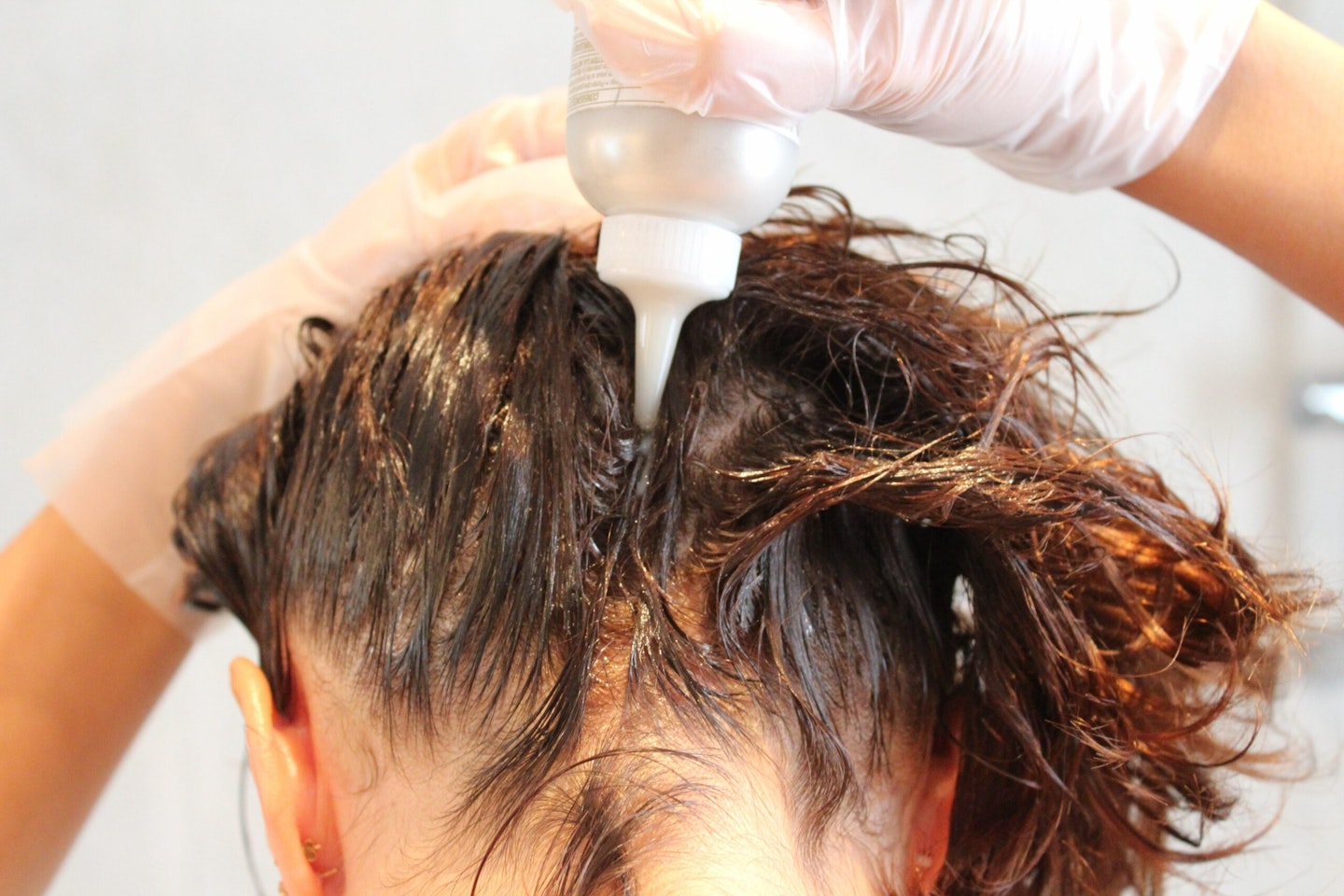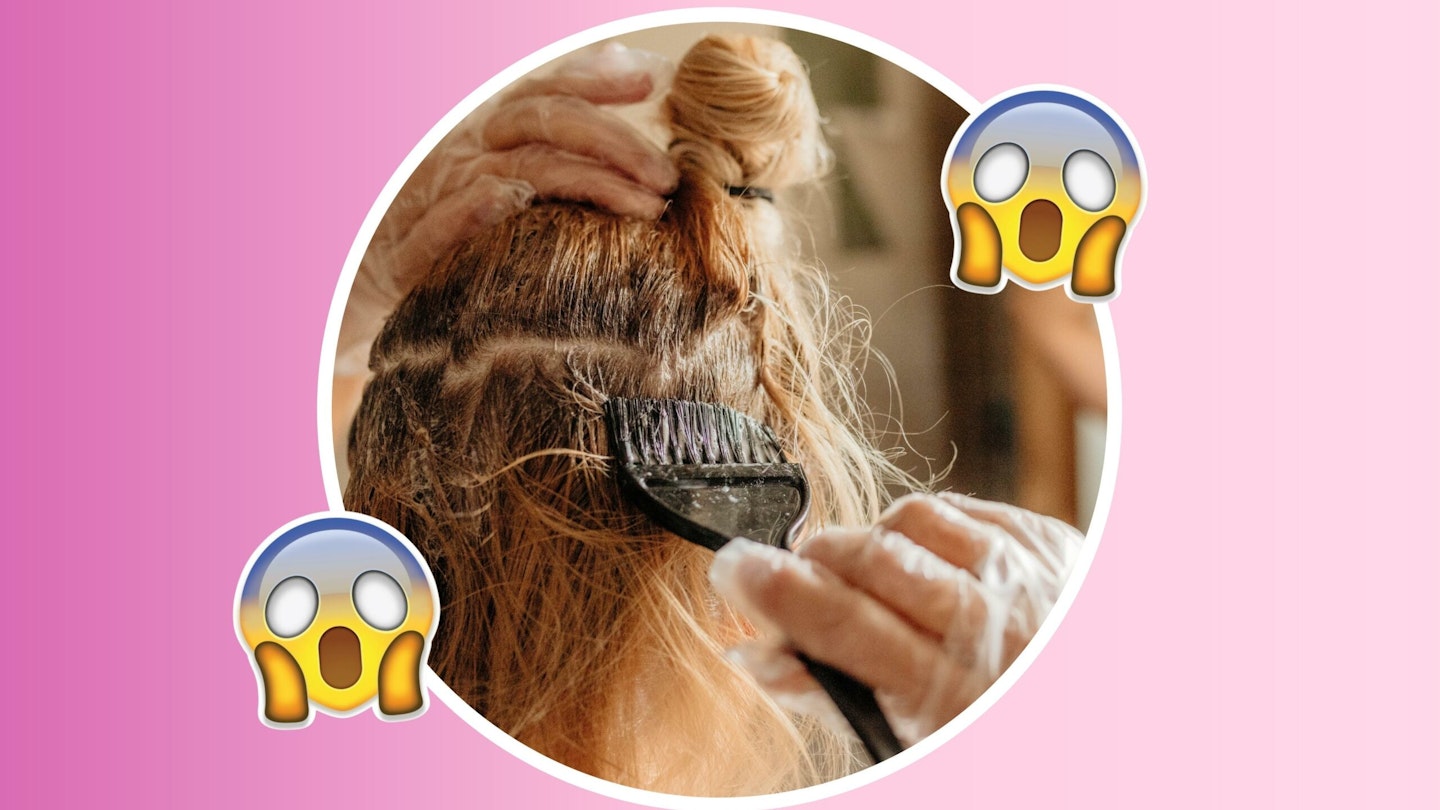Braved it with the box dye only to be left with a shade that’s giving instant regret? Wondering how to carry out colour removal from hair? Don't worry, we’ve all been there. Whether the dark brunette you bought came out jet black or you’ve overdeveloped it, resulting in awkward streaks, while at-home dyes come in handy for covering up unwanted greys and grown-out roots, if you're bored of your hair colour and want a change, before you make any impulsive decisions that'll leave you hiding under a hat for weeks, we urge you to swing by your local salon first.
And if you’ve already had your DIY disaster? The key thing here is: don’t panic. Trying to cover up your mistakes with another load of dye always makes it worse. In fact, if not done correctly, you can cause a lot of damage to your hair. That being said if you’ve got zero time on your hands – and have a very important work meeting coming up – you’ll find our home remedy guide for removing semi-permanent dye here.
Otherwise, try colour stripping. What is it, you ask? Similar to bleaching, colour stripping is a chemical process that lightens the hair – not your natural hair colour, might we add, but the dye itself. Essentially, it works by stripping away the added colour and returning you to your roots. While technically, it can be done at home, seeing a professional is always best. But before you book in with your hairdresser, we’ve asked some expert colourists to explain further.
Meet the experts:
Paul Edmonds, Celebrity Hair Stylist and owner of Paul Edmonds London
Georgina Hopkins, Colour Director at Hadley Yates Salon
Emma Vickery, Creative Director at Percy & Reed
Kris Barnes, PROVOKE Ambassador and Celebrity Colourist
Vas Mikellides, Senior Colourist at Fowler 35
What is the best way to remove dye from hair?
Although it’s a lot cheaper to strip your hair colour from home, it’s trickier than you. One wrong step can result in patchy hair – and nobody wants that! “When you strip your hair at home, you may not get all the areas of the hair that you need to,” shares Georgina Hopkins, Colour Director at Hadley Yates Salon. “At the salon it’s a controlled environment with a professional who knows the product and how to use it safely.”
Vas Mikellides, Senior Colourist at Fowler 35 says: “Home colour stripping involves a one-kit-does-it-all approach and doesn’t take into consideration level and depth and how intense a service your hair might or might not require. A stylist however can assess the depth and can guide you through the process whilst maintaining your hair’s health.”
“The difference between at-home hair colour stripping and in the salon is you’re paying for years of experience and most importantly, looking at hair condition first over getting to your target colour,” adds Celebrity Hair Stylist, Paul Edmonds.

How can I remove hair dye from my hair at home?
“We would never recommend stripping your hair colour yourself at home full stop,” says Emma Vickery, Creative Director at Percy & Reed. “Doing this can cause irreversible damage, so I would advise that they go into the salon for a consultation”.
That being said, if it’s just a toner you’re trying to get rid of, “these are easier to remove” says Kris Barnes, PROVOKE Ambassador and Celebrity Colourist. “If I want to erase a toner from hair, I’d mix vitamin C powder with warm water and soak the hair in it for five minutes. And then shampoo using a cleansing shampoo,” he adds.
How can I get my hair back to its natural colour?
Believe it or not, there’s no actual way to completely restore your natural hair colour after dying it. “You would need to strip the colour out and then use another colour that’s similar to your own natural shade,” notes Kris. “The best way to get your hair back to its natural colour is to simply grow it out,” adds Georgina. “When trying to use dye to colour your hair back to its natural colour, it will often be slightly different to your natural colour and tone.
Vas says: “Once you have coloured your hair, permanent or semi-permanent, you have most likely lifted or disturbed the natural undercoat. Once this has been done it’s impossible to revert to your natural colour through stripping. However, colourists can lift heavy colour pigments, then tone or gloss the hair to get it to as close to its natural colour as we can.”
Does at-home hair colour remover actually work?
“Hair colour removers in the right hands to remove professional hair colour normally work, but some box colours on the other hand are almost impossible to remove,” Kris notes.
It also comes down to what you’ve used on your hair in the past, Georgina reveals. “The overuse of box dyes will make it harder to strip colour out and probably result in looking very patchy,” she says. “It’s also very likely that colour stripper will turn your hair orange.”
“If the hair is very damaged, I would not recommend stripping the colour,” Georgina says. Paul agrees, adding: “Even with the best product with a bonding agent and the best conditioning products, if the hair is very sensitised, it will break off – so don’t try without advice or without a test piece first.”

How should I prepare my hair for colour stripping?
When opting for colour stripping, whether it be at home or in the salon, you need to consider the condition of your hair. “If the hair is very damaged, I would not recommend stripping the colour,” Georgina says. Paul agrees, adding “Even with the best product, with a bonding agent and the best conditioning products, if the hair is very sensitised, it will break off – so don’t try without expert advice or without a test piece first.”
How do I take care of my hair after colour stripping?
When it comes to treating your tresses after colour removal– and most likely, another load of hair dye, three words: condition, condition, condition. “Any form of lifting colour or stripping will cause a degree of dryness and porosity to the integrity of the hair,” says Vas. “Therefore, it’s highly recommended that once hair has been put through such a process you follow it up with an in-salon treatment and a good at-home haircare regime.”
“And be aware of how much heat you use,” Georgina adds. “I recommend always using a heat protector, as too much heat can pull colour out and cause further damage.”
In conclusion
Now, we’re not going to force you to stay indoors until your hair colour has faded. If you can’t see a professional for any reason and you haven’t already sensitised your strands with heaps of at-home dyes, try the home remedies we linked above. But if you can, call your hairdresser and schedule in a consultation. Your future mane will thank you!
